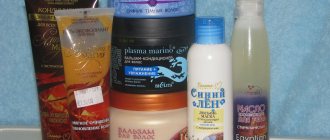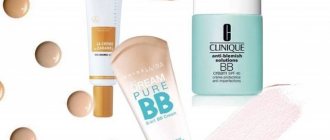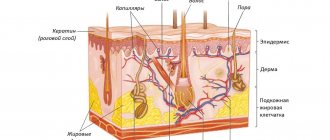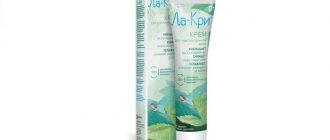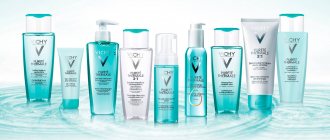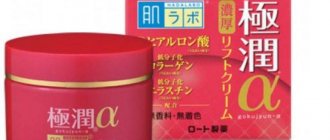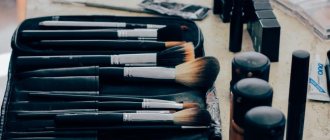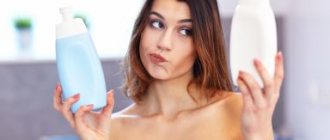Adviсe
- What are hormones
- Ban on hormonal cosmetics
- What are phytoestrogens
- Phytosterols
- Harm of phytoestrogens
- Where are phytosterols found?
- Flavonoids
- Is it worth buying cosmetics with hormones?
- Placental cosmetics
- What is placenta
- Hormones in cosmetics from the placenta
- Placenta extract
Hormonal cosmetics is a hot topic today. Some people are afraid of such creams, but for others it is a wonderful remedy. Where is the truth?
In fact, there are no skin care products with real hormones. Adding natural or synthesized estrogens (female hormones that affect the condition of the skin) to cosmetics is prohibited by law in the Russian Federation, Europe and America. All that is available to companies is to introduce into the products components that resemble hormones - phytoestrogens. They are released from plants.
Ban on hormonal cosmetics
Most often, representatives of the fairer sex think about wrinkles and aging at the age of 30-35. This is because at this age the first “swallows” of aging are noticeable. And during menopause, the content of estrogen in the blood decreases. If there are few of them, then hyaluronic acid and collagen are almost not synthesized. This causes a decrease in skin elasticity and the appearance of wrinkles.
The use of cosmetics with hormones gives almost immediate results. After 2 weeks, the folds disappear, the skin gains elasticity and beauty. But the laws of the Russian Federation, the USA and Europe prohibit hormonal cosmetics containing natural or artificially synthesized estrogens, even despite their effectiveness.
Cosmetics do not use synthetic or natural hormones. Hormone-like plant extracts are added to the creams.
Such prohibitions are due to the fact that hormones that cope so well with wrinkles cause various complications:
rosacea The vascular walls lose their elasticity, a network of capillaries appears on the skin; anemia of the skin. Because the skin does not do the work assigned to it, it becomes transparent and shiny; hirsutism. Noticeable hair appears on the skin; metabolic disorders; weight gain; decreased adrenal function; disorders in the sexual sphere; hormonal imbalance; oncology.
Because of this, hormones should only be used under medical supervision. Moreover, all patients must receive individual doses.
With all this, despite the ban, sometimes there are products containing hormones. They are used in beauty salons to treat scars, cellulite, and aging. It happens that the manufacturer includes some hormones in the composition in order to get high sales.
Where to look for hormonal cosmetics?
What companies produce hormonal cosmetics?
Most consumers believe that cosmetics from the following companies are hormonal: - Mary Kay - Vichy - Plazan - Amway
But the tests showed that Mary Kay, Vichy and Plazan cosmetics do not contain any hormones other than phytoestrogens. Amway cosmetics require additional research.
In turn, the following manufacturers officially declare the use of phytoestrogens:
- Reneve - Pleiana - Emansi - La Biosthetique - Bb Laboratories - Natura Bisse - Amadoris - Belnatur - Taplis - Eldan - Dr. Brandt - Kate Somerville - Chanel
Tags: signs of aging
Market Analytics
- Black Lives Matter movement: reaction and consequences for the beauty industry
- COVID-19 is changing the rules of the game in the cosmetics market
- Beauty of the future: cosmetic innovations 2020
Convenient search for beauty salons on our website
Beauty salons in Moscow Beauty salons in St. Petersburg Beauty salons in Ekaterinburg Beauty salons in Novosibirsk
Latest blog posts on our website
- Naturecream / Tremella Extract - Snow Mushroom Detox for Skin
- Prostye-sovety / How to visually enlarge your lips with makeup
- Naturecream / Apricot kernel oil for face
- Naturecream / MATRIXYL3000 - the best skin elasticity stimulator
- Naturecream / SPF in Natural Oils
- Naturecream / Geranium (Pelargonium) oil for skin health and beauty
- Prostye-sovety / Save on a beauty salon: procedures that can be done at home
- Naturecream / Growth Factor - brings back youth?
- Oksana-Lezina / 3 effective abdominal exercises from a fitness instructor for beginners
- Prostye-sovety / Making perfect curls at home
Latest forum topics on our website
- Natalya / How to properly make a gelatin mask?
- Mrs._Smith / Badly sunburned! What to do?((
- Ice / Is it necessary to combine fitness classes with a diet?
- Antonova / What can be used for hair loss?
- Radio operatorKat / Who was on a protein diet?
Other articles in this section
| Japanese cosmetics: review of brands and assortment This article will tell you about the ten most famous Japanese cosmetic brands. |
| Peptides in cosmetology: how to choose and use correctly Peptides allow women to slow down the aging process and prolong youth. Scientists consider these compounds to be unique. Technologies appeared not so long ago, but have already proven themselves to be the best. |
| Fabric face masks More and more often, representatives of the fairer sex are hearing about fabric face masks. This article will tell you why they are needed and what effect they have. |
| Hyaluronic acid for the face in injections, cosmetics and tablets Hyaluronic acid is a natural glycosaminoglycan that is part of all human biological fluids: saliva, sperm, joint fluid, etc. It is a catalyst for restoration processes, and is also involved in the division of tissue cells, such thus keeping them constantly updated. |
| Transparent face powder: what it is, how to choose and use The essence of its use is to correct basic makeup. |
| Review of plum lipstick This season, eccentric and extravagant plum lipstick will continue to be at the peak of popularity. |
| French cosmetics. Brands and assortment. Part 1. Vichy, L'Oreal, Garnier, Yves Rocher, Bourjois, La Roche-Posay French cosmetics undoubtedly rank No. 1 in the world. Numerous brands have found fans not only in Europe, but also in America, Australia, Asia and even Africa. A wide range of care products is designed to suit all skin needs: cleansing, correction of imperfections and age spots, exfoliation, moisturizing, nutrition, global anti-aging care. Each brand has its own bestsellers and legendary products. In this article we will talk about cosmetics from Vichy, L'Oreal, Garnier, Yves Rocher, Bourjois, La Roche-Posay. |
| Sunscreen: which one is better to choose? Sunscreen or sunscreen should be used during active sun exposure and after cosmetic procedures on the skin. In this article we will look at which sunscreen is better, spf 50 or with less protection, how to apply sunscreen correctly, what creams can be used by children, and we will give a rating and review of well-known cosmetic brands. |
| Russian cosmetics. Brands and assortment In this article we will talk about 7 brands of Russian cosmetics. |
| Anti-wrinkle cream Over the years, the skin loses its elasticity and firmness, which contributes to the appearance of wrinkles - this is an inevitable process that can only be delayed if you start using an anti-wrinkle cream in a timely manner, selected in accordance with the age and characteristics of the skin. |
What are phytoestrogens
So, what are phytoestrogens? Should we be afraid of them? These components are similar in structure and effects to human hormones (estrone, testosterone, estradiol). They can be found in plants: algae, date palm, wheat germ oil, alfalfa, pomegranate seeds, pine pollen.
Plant estrogens are contained in anti-aging products to improve metabolic processes in cells to restore and strengthen them.
But there are a few “buts” here. Not all plant estrogens are able to work externally. Some hormone-like properties become noticeable when they enter the intestines, where they are broken down by bacteria. This is the situation with flax oil. If you take it internally, the skin truly improves, but the positive qualities of the oil are not revealed in external cream.
Phytosterols
The most promising direction is steroidal phytoestrogens, which are called phytosterols. Studies have confirmed that they effectively affect the condition of the skin when added to creams: they can protect, soften, and moisturize.
But there is a “but” here too. The problem is that their influence is 5 thousand times weaker than our hormones. In order for cosmetics with a similar composition to be effective, high concentrations will be required.
For example, soybean oil contains only 0.37% of components similar to hormones. But for them to function, it is not enough to add oil to the cream. It is required to obtain phytosterols and concentrate them using expensive technologies. Of course, only serious concerns with laboratories and research institutes are capable of producing such products. It turns out that a high-quality cream will not be cheap.
Phytosterols require high concentrations. Complex technology is used to isolate them, which is why such cosmetics are never cheap.
One of the myths about phytohormones is that they are addictive. That is, while you are using the product, your skin is beautiful, but when you stop using it, your face quickly begins to show signs of aging. But this is not true. Of course, if you use a high-quality, expensive cream for a long time, and then switch to a cheap and low-quality one, the condition of your skin changes a lot. But here the problem is not in plant hormones, but in the quality of cosmetics itself.
"Yesterday's" makeup
Stale makeup will be obvious and will not show you in the best light in front of others. This will especially have a negative impact on the attitude of the stronger sex, who do not care why your mascara suddenly fell off or ran, your lipstick smeared, or your eyeliner rubbed off.
Try to correct any mistakes throughout the day to always look neat and presentable.
Harm of phytoestrogens
So, why is there evidence that phytoestrogens are harmful? It turns out that even with an accurate calculation of the concentration, it is difficult to guarantee the normal effectiveness of the cream. Although these hormones work in ways similar to what we excrete from the body, their effects are difficult to predict. It is impossible to determine what effect it will have on the skin.
In addition, not all plant hormones can have a similar effect. Companies often include lignans in their cosmetics; their effect is reminiscent of phytoestrogens. But it turned out that the effect manifests itself only when they enter the intestines and when they are broken down, i.e. when taken orally. Thus, their inclusion does not affect the skin in any way.
Where are phytosterols found?
Creams containing phytosterols are suitable for any age. They are easily absorbed, have a light structure, and are therefore useful for young and mature skin. Often the words “phytoestrogen” or “phytosterol” are not indicated in the composition. In the list of ingredients you need to look for plant elements. So, where are phytosterols found:
extract from mimosa bark. It increases skin protection and the number of fibroblasts; ginseng extract. Capable of fighting harmful radicals. Often found in products for dry skin and prone to irritation, found in shampoos; shea butter extract, wild yam, etc. can provide a long-lasting moisturizing effect; horse chestnut extract can provide an anti-edematous effect and remove excess fluid.
Flavonoids
Another separate class of biologically active elements from plants are flavonoids. They are not considered phytoestrogens, but resemble their effects: they can enhance the process of synthesis of collagen and elastin, and increase skin elasticity. In addition, flavonoids fight radicals.
Like plant hormones, they work from within the body. It is flavonoids that make dark chocolate, wine, and blueberries healthy. They began to be used in cosmetics. In the list of components you should look for:
green tea extract; from citrus fruits; green onion extract; from blueberries and grapes.
Flavonoids are another beneficial substance found in plants. Their production process is similar to phytosterols.
Cosmetics with flavonoids include almost everything that is said about phytosterols. In order for them to act on the skin, their content is required to be maximum. Such cosmetics always cost a lot, otherwise the presence of these substances in them is only formal. The last option, unfortunately, occurs quite often. For example, quercetin is yellowish in color; at normal levels, it should be yellowish. At the same time, there are creams on the market with quercetin, but they have a perfect white tint.
What are hormonally active substances?
In the spring of 2013, the World Health Organization recognized hormonally active substances as a “global threat” to the world’s population. A number of studies prove that hormonally active substances lead to a more frequent occurrence of certain diseases.
At the moment, the European Union has identified 550 hormonally active substances, which are, of course, not only in cosmetics, but also in objects of everyday use, primarily in plastic and products made from it.
Hormonally active substances are chemical substances that act as endogenous hormones, that is, as hormones already contained in the body. In essence, they are not toxic, but, accumulating in the body, they can negatively affect development processes. Therefore, embryos, small children and adolescents react primarily to such substances.
Many substances act in the body as female hormones - estrogens or male hormones - androgens. Their negative effects on the endocrine system are known.
It has now been found that hormonally active substances can:
- Negatively affects sperm production in men,
- Lead to abnormal development of embryos,
- Influence the formation of hormonal cancers: breast, prostate and ovarian cancer.
- Lead to early puberty
Is it worth buying cosmetics with hormones?
The question of whether it is worth buying cosmetics with hormones is difficult to answer unequivocally. Here everyone decides for themselves. After all, their influence often depends on individual characteristics. It happens that an allergy appears. Thus, one cream on the skin of two people will show different effects.
It is better to contact a professional: cosmetologists will help you choose a cream that suits you personally. The “correct” products with plant hormones actually have a positive effect on the skin and change its contours. They are able to smooth out wrinkles, give elasticity, and a beautiful shade. But to achieve a similar result, you will need to use the cream for at least 3 months.
You should not trust various myths about addiction to cosmetics with plant hormones.
People are often intimidated that cosmetics with phytohormones are like a drug and are addictive. As already mentioned, a popular myth is that when using a cream it gives a great effect, but after abandoning it, the skin sags and becomes sagging. This is wrong. In fact, when changing a cream to a lower quality one, the skin changes condition, but not due to phytohormones.
Hormonal cosmetics: myths and truth
In fact, there are no cosmetics containing hormones. Adding natural or synthetic estrogens (female sex hormones, which primarily determine the condition of the skin) to creams is prohibited by law in Russia, the USA, and Europe. All that cosmetics manufacturers can do is add phytoestrogens, hormone-like compounds isolated from plants, into their products.
WHAT ARE PHYTOESTROGENS
These are biologically active compounds, in chemical structure and action reminiscent of human sex hormones (estradiol,
Take the test
Check your stress levels
testosterone, estrone). They are found in many plants. For example, in red seaweed, date palm seeds and pollen, soybean and wheat germ oil, pomegranate seeds, alfalfa, pine pollen... Phytoestrogens are included in anti-aging products to improve metabolic processes in the epidermis, for cell regeneration and strengthening the cellular framework .
However, this is where the “buts” begin. First and foremost, not all phytoestrogens work externally. The hormone-like properties of many of them appear only after reaching the intestines, where they are broken down by beneficial bacteria. For example, this is exactly the case with flaxseed oil: if you eat it, the skin will really improve, but in creams it does not reveal all its capabilities.
MAL ZOLOTNIK
The most promising phytoestrogens in cosmetology are phytosterols . It has been proven that they are really effective in creams: they protect the skin, soothe, soften, and help retain moisture.
However, there is a “but” here too. The fact is that the effect of phytosterols is approximately 5000 times weaker than the effect of human hormones. For cosmetics containing them to be effective, very high concentrations are needed. For example, soybean oil contains only 0.37% of active hormone-like substances. For them to work, it is not enough to simply include this oil in the cream - you must first extract phytosterols from it and concentrate them using expensive technologies. Naturally, only large cosmetic concerns with powerful research centers and their own laboratories can produce such products. This means that good creams with phytosterols cannot be cheap .
ADDICTIVE EFFECT: IS IT OR NOT?
One of the horror stories about cosmetics with phytohormones is that they are addictive. They say that while you use this product, your skin looks amazing, but as soon as you give it up, your face quickly becomes covered with wrinkles. In fact, this is nothing more than a myth. True, if, after using a good cream with phytoestrogens for some time, you change it to a care product that has a modest composition, perhaps your skin will actually look worse. But the point here is not in phytohormones, but in the general quality of the cream.
Creams with phytosterols are suitable for all ages. These lightweight, easily absorbed products are suitable for both mature and young skin. Usually the words “phytosterols” and “phytoestrogens” are not written on packages. Look for botanicals in the ingredient list. Here are some of them:
Mimosa bark extract – improves the protective properties of the skin and increases the number of fibroblasts.
Ginseng extract – has antioxidant properties. It is often included in creams for dry and sensitive skin, and in preparations for strengthening hair.
Wild yam extract, shea butter, argan, Brazil nut and other plants provide long-lasting skin hydration.
Horse chestnut extract – has an anti-edematous and drainage effect.
SEPARATE CLASS
Another group of bioactive plant compounds stands apart - flavonoids. These are not phytoestrogens, but their effects are very similar to them: they also enhance the synthesis of collagen and elastin fibers and improve skin elasticity. In addition, flavonoids fight free radicals and counteract the aging process in the skin.
Placental cosmetics
Placental cosmetics are a skin product that is created on the island of extracts from the placenta. This is a new product on the modern cosmetics market. Lotions, creams, and hair products are produced from the placenta. But it is important to follow the brand, because... Quality products are produced only by reputable companies.
Such cosmetics are suitable for any age. But it is better to use it at the age of 35-45, when the production of elastin and collagen in the skin decreases. The placenta contains components that can effectively regenerate the skin.
What is placenta
So, let's figure out what placenta is and where it is obtained for cosmetic purposes. This is the organ that carries out communication and metabolism between the fetus and the mother. During the gestation process, it appears in every mammal.
It contains vitamins, minerals, and acids. The placenta produces the hormones required for normal childbearing. But it also contains many protein factors that have a positive effect on the condition of cells. In cosmetology, placenta is used, which is obtained from humans and animals. If cosmetics contain placenta obtained from humans, then the word “allogeneic” is present in the composition.
Placental cosmetics do not contain harmful hormones. The extract contains only useful components without side effects.
There is an opinion that the placenta is taken from abortion materials. But this is not true. Manufacturers use the organ after a normal birth. And here it does not matter whether the placenta is of human or animal origin; it contains the same bioactive components.
But as for animal placenta, they use only those that grew in environmentally safe regions and on natural food.
Cosmetics without hormones
What should a modern anti-aging cream be like? At what age can you use such cosmetics? Let's try to discover the secrets of modern elixirs of youth.
Our consultant is Candidate of Medical Sciences, dermatocosmetologist, specialist in modern biorevitalization programs, international trainer of Q-Med Elena Evgenievna Rumyantseva
.
– What are the main trends in anti-aging cosmetics now?
– The main and most important trend is the constant search for new ingredients and methods of their action. We can say that peptide cosmetics are now on the crest of the wave. Peptides are chains of amino acids. They regulate metabolic processes in the skin, protect and nourish it. In addition, they are safe, that is, non-toxic, non-allergenic and non-immunogenic, and can penetrate quite deeply into the skin. And it is peptides that many cosmetic brands are now relying on.
– Now almost every company has patented active substances. How to navigate the diversity of all these “miracle molecules”?
– Large brands really actively invest in scientific developments. As a result, effective substances periodically appear, which the company begins to include in its products.
But it happens that after obtaining a particular molecule, researchers no longer carefully calculate its interaction with other components. Or they do not pay enough attention to calculating the optimal amount required for the product to work well.
All this, of course, does not make the cream dangerous for the skin. But this is where the line lies between creams whose effectiveness has been scientifically proven and those that simply do not cause harm. The consumer can find out this only by experience.
– How do you even know if an anti-aging cream will work?
– You should start by choosing products from well-known manufacturers. It is clear that a cream of an unknown brand, purchased in transit, is unlikely to have any effect. Therefore, you should purchase cosmetics only from trusted stores or beauty centers. This is a definite guarantee. In addition, there you will most likely receive professional advice and be able to choose cosmetics specifically for your skin type.
In this sense, professional products are in a winning position in most cases. By law, cosmetics undergo mandatory safety and quality studies. But their effectiveness is tested on a voluntary basis, if the manufacturer himself wants it.
It is professional brand cosmetics that undergo such testing more often than others. The fact is that such products usually contain a number of active substances in fairly high concentrations. They guarantee their high efficiency. If it has been proven by voluntary testing, the brand receives a special certificate. Its presence is evidence that the product really works.
– Is it worth studying the composition of the cream before purchasing? After all, there is quite a lot that is incomprehensible to the average customer.
- Yes, definitely. You need to know whether the real composition matches the colorful slogans on the packaging. Let's say it says that the cream contains chamomile extract, and its beneficial properties are listed. And the extract itself is at the very end in the list of components. This means its concentration is very low. It turns out that it seems that the manufacturer did not deceive. But you are unlikely to feel the beneficial properties it claims.
In general, all modern creams - we are considering only decent quality brands here - can be divided into two groups. In the first, the active ingredients are of plant origin, and in the second, they are of animal origin. The anti-aging cream of the first group should contain antioxidants, moisturizers, and nutrients. They are obtained from plant extracts, resins, and essential oils. The second group of products includes DNA complexes, collagen, elastin, and enzymes.
Both products can give a pronounced positive effect. The main condition is that the active substance in the cream must be contained in sufficient quantities and at the same time combined with other components.
– Today you can find creams for the earliest wrinkles. When should you even think about such cosmetics?
– There is no universal rule. It all depends on the condition of the skin, genetic predisposition, climate, and lifestyle. On average, the need for creams appears at the age of 25–30, when the body’s production of natural protective factors decreases. This process can be helped from the outside. However, it is not a fact that all the necessary products will penetrate the skin.
– But it is believed that anti-aging creams should work in the deep layers of the skin. How do you know if they are reaching the right level?
– It cannot be said that all processes important for the skin occur deep in the dermis. The epidermis also needs hydration and protection. But, of course, to obtain a pronounced effect, you need to influence the dermis.
To penetrate this layer, the molecules of the active substances must be very small. Unfortunately, you will not find information about their sizes on the labels. But there you can find an indication of the presence of so-called carriers. These are transport molecules that deliver the necessary active substances to the dermis. The most common of them are nanosomes, liposomes and spherulites.
It is worth understanding that their production requires serious investments. Therefore, only large companies can afford to use carriers in cosmetics. If the inscription “contains nanosomes” appears on the label of an inexpensive cream of a little-known brand, there is reason to doubt the veracity of the manufacturer.
– How possible is it generally possible that some component is indicated on the label, but is not included in the product?
“Fortunately, this is becoming less and less common today. However, there are other pitfalls. So, for example, you can see on the cream the inscription “contains cell culture lyophilisate.” The consumer receives a signal: a valuable product, enriched with cells.
But in fact, the inscription means that these same cells were frozen and dried in a vacuum. This treatment significantly reduces their activity - it becomes the same as that of most plant components. For the latter, by the way, lyophilization is one of the effective ways to maintain activity. It seems that the manufacturer is not deceiving you: these substances really are in the product. But they just won’t have the effect you expect from “living cells.”
– Let’s imagine the opposite situation: there is a certain component in the cream, but the manufacturer is silent about it. I'm talking about hormonal cosmetics - the most important “horror story” of recent years.
– Unfortunately, it is impossible to say unequivocally that cosmetics with hormones are nonsense. The fact is that, according to the standards existing in our country, the manufacturer may not indicate the presence of hormonal components in the product if their quantity is below the established minimum.
In this case, the product will be tested for safety in the prescribed manner. That is, such cosmetics will not harm the skin. At least in the short term - after all, there have been no long-term clinical studies on hormonal cosmetics. And in any case, the consumer will not know that his favorite cream contains hormones.
Of course, the presence of hormonal components in creams is rare. But if you want to completely insure yourself against such a situation, try to choose cosmetics made in Europe or the USA. There are more stringent regulations, and manufacturers are required to indicate all components “down to the last molecule.” It should be noted that in our country there are also worthy manufacturers. There are not very many of them yet, but any competent cosmetologist knows these brands.
– There is a common belief that the skin gets used to cosmetics. Is it worth changing the anti-aging cream after some time if it works?
– Here we need to return to our division of cosmetics according to composition into predominantly animal and plant-based. Products based on substances of animal origin, in particular cells, can be used for decades. This will not make their effect worse.
Plant-based cosmetics should be changed periodically - for example, choose a product from the same line, but with a different active substance.
In addition, it always makes sense to change the base of the product. The point is that in winter we need richer textures. In summer - lighter. Nowadays, many products are available in several forms at once, so choosing the right option will not be difficult.
There is one more subtlety that concerns day and night creams. In summer, during the day, the skin needs more hydration, and at night, it needs protection and nutrition. In winter, on the contrary, it is better to moisturize it at night and nourish it during the day. This is also useful to consider.
– Manufacturers actively encourage us to use their products in entire lines: cleanser, serum, cream, peeling. Allegedly, then all means will work better. How justified is this?
– It is, of course, more profitable for the companies themselves to sell a whole range of products. At the same time, of course, such lines use components that mutually help each other and do not compete.
But choosing a specific set of products is an individual matter. In addition to cream, it makes sense to periodically use serums. They contain active substances in higher concentrations. It is useful for the skin to arrange such an intensive course. Peels, mechanical or enzymatic, are also necessary. They should be used one to three times a week, depending on your skin type.
But the question of daily cleansing products remains open. We keep them on our face for only a short time and then wash them off. Therefore, it is not necessary to purchase a product with a high content of active ingredients.
The exception is professional cosmetics.
The cleansing agents in it are quite rich in composition. And even with not too thorough washing, they will have a beneficial effect on the skin. Olga DEMINA
Hormones in cosmetics from the placenta
It is believed that placenta cosmetics contain hormones, otherwise they are ineffective. Yes, the placenta is full of hormones. They were present in the first products, whose rejuvenation effect was amazing. But they caused many side effects, hormonal imbalances, etc.
Modern technologies have helped to obtain the required components from the placenta by removing steroids, which is why healthcare allows the use of such cosmetics today. In addition to hormones, the placenta contains many useful components that affect cell growth. They give the skin hydration, nutrition, elasticity, and regeneration.
What hormonally active substances are most often found in cosmetics?
The EU priority list contains about 120 potential hormonally active substances used in cosmetics. The entire list is divided into 3 categories: category 1 contains all substances whose hormonal effects have been proven in animal tests. Category 2 and 3 list substances that are suspected of having hormonal effects on the body.
, which has more than 100 products in its assortment and find out which brands also contain hormonally active substances.*
*According to BUND data
Here I will limit myself to category 1 and list the hormonally active substances that are used in cosmetics:
- Preservatives: Methylparaben, Propylparaben, Et hylparaben, Butylparaben
- UV filters: Ethylhexyl Methoxycinnamate (OMC), 4-Methylbe nzylidene Camphor, 3-Benzylidene Camphor
- UV absorbents: Bezonphenone-1 and Benzophenone-2
- Colorant in hair dyes: Resorcinol
- Conditioner for face and hair: Cyclotetrasiloxa ne
- Antioxidant: Butylhydroxyanis ol (BHA)
- Antibacterial protection: Boric Acid
- Denaturing agent: Diethyl phthalate
- Skin care product: Hydroxycinnamic acid
- Skin protectant: Dihydroxybipheny l
Placenta extract
Placenta extract effectively activates blood flow. It has a positive effect on blood circulation in the skin and helps fight toxins. It activates cell respiration and metabolic processes. Extract from the placenta causes melanin to come to the surface of the skin. From there it leaves with exfoliated cells and keratin.
It has also been proven that placental extract can relieve inflammation from the skin. It reduces redness due to prolonged exposure to UV rays. These components prevent the formation of stains and sagging.

